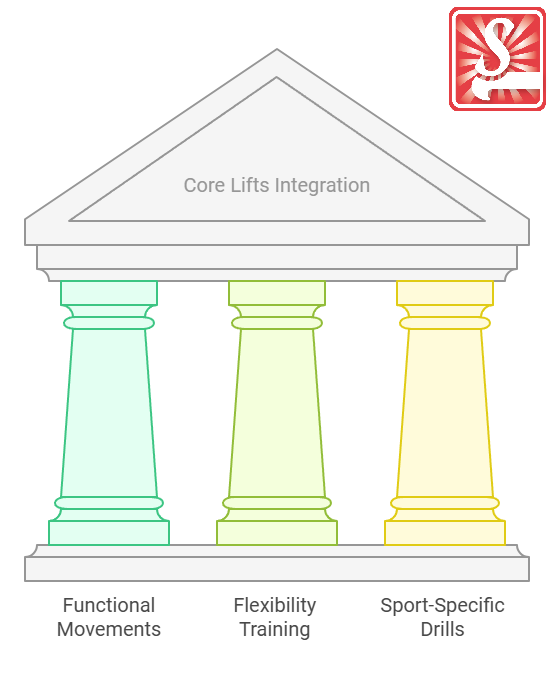Maximizing Performance: Understanding Core Lifts in Strength and Conditioning
Posted by Jonny BBAD Nelson in Dec, 2024

What is a concise description of the core lifts in strength and conditioning?
Core lifts in strength and conditioning refer to fundamental compound exercises that engage multiple muscle groups simultaneously. They are critical in workouts because they build a solid foundation of strength, improve muscular endurance, and enhance overall athletic performance. Typical core lifts include the squat, deadlift, bench press, and overhead press.
Why do people in enterprises need to understand core lifts?
Enterprises in the fitness and sports industry need to understand core lifts because these exercises are integral for developing well-rounded strength programs. They are essential for trainers, coaches, and athletes to promote efficient training sessions that improve performance and prevent injuries. Understanding these lifts helps create tailored programs that meet the diverse needs of clients or athletes.
“Core lifts form the backbone of strength training programs, combining power, stability, and efficiency to build a robust foundation for athletic performance and injury prevention.”
What are the key components or elements of core lifts?
The key components of core lifts include proper technique, appropriate load management, progression schemes, and individualization:
- Proper Technique: Ensures safety and effectiveness during execution.
- Load Management: Selecting the right weight for the individual’s ability.
- Progression Schemes: Systematic increases in load or volume over time.
- Individualization: Adjusting techniques to fit specific goals and physiological needs.

Registered Trademark®
What key terms, with descriptions, relate to core lifts?
- Compound Exercises: Movements engaging multiple joints and muscle groups at once, such as the squat or deadlift.
- Load Management: The process of determining and adjusting the amount of weight lifted to optimize performance and minimize risk.
- Progressive Overload: A training principle where the workload is progressively increased as the athlete adapts, enhancing strength and muscular gains.
- Periodization: A structured approach to training involving the manipulation of training variables over time to achieve peak performance at key times.
Who is typically engaged with operating or implementing core lifts?
Individuals typically engaged with implementing core lifts include strength and conditioning coaches, personal trainers, sports coaches, physiotherapists, and athletes themselves. Each plays a pivotal role in designing, supervising, and executing strength training programs that incorporate these essential exercises.
How do core lifts align or integrate with other components of strength and conditioning techniques for Sport Coaching and fitness?
Core lifts integrate seamlessly with other strength and conditioning components by serving as foundational exercises that support athletic training. They complement functional movements, flexibility training, and sport-specific drills. When designed into a well-rounded program, core lifts help improve power, endurance, and functionality, aligning with overall athletic goals and conditioning strategies.

Where can students go to find out more information about core lifts?
Students looking for more information about core lifts can consult reputable sources such as:
- Academic Textbooks: Strength and conditioning manuals.
- Peer-Reviewed Journals: Research in sports science.
- Professional Associations: NSCA (National Strength and Conditioning Association).
- Online Resources: Fitness websites and video tutorials by certified professionals.
Scope of Practice Document
Adult Pre-Exercise Screening System
Australian Sports Commission
What job roles would be knowledgeable about core lifts?
Job roles that typically require extensive knowledge about core lifts include:
- Strength and Conditioning Coaches
- Personal Trainers
- Physical Therapists
- Athletic Trainers
- Sports Scientists

What are core lifts like in relation to sports, family, or schools?
In sports, core lifts are essential for developing the strength and power necessary for athletic performance across various disciplines. In a family context, understanding these exercises can promote a healthy lifestyle and encourage shared physical activity. In schools, incorporating core lifts into physical education promotes lifelong fitness habits among students and contributes to their overall well-being.
(The first edition of this post was generated by AI to provide affordable education and insights to a learner-hungry world. The author will edit, endorse, and update it with additional rich learning content.)



 Post Tagged with
Post Tagged with